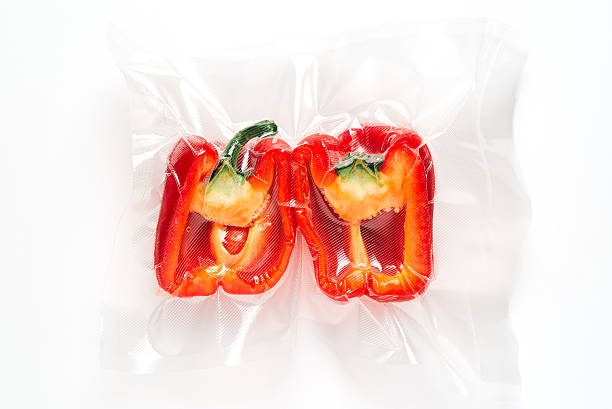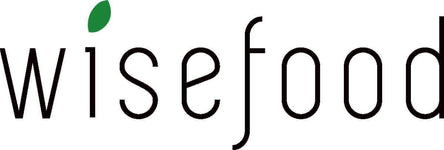Support:
+49 (0) 89 24418362

Cellular glass - environmentally friendly or stale?
Cellophane has always been a popular packaging material for food. But is the material also sustainable and environmentally friendly? Does it meet today's requirements for environmentally friendly products? Are there alternatives to conventional cellophane? Do we get to the bottom of these questions in our article?
Cellular glass: what is meant by it
Cellophane is best known under the term cellophane. The cellulose hydrate is made from wood, strictly speaking from the regenerated cellulose. The industry uses this to obtain viscose fibers through a chemical process. They are the basis for the thin, transparent film. Crackling when compressed is characteristic of cellophane. Cellular glass is naturally impermeable to liquids, but not to water vapour. To prevent this property, some manufacturers coat cellophane with plastics.
Cellular glass: sustainable or harmful to the environment?
Cellophane is mainly made from the renewable raw material wood and is therefore sustainable. The production process alone is not considered particularly environmentally friendly. The regenerative cellulose pulp (wood pulp) decomposes into carbon disulfide and caustic soda. Mixed with glycerine, transparent cellulose is created: cellophane. This is a complex and costly process that requires many resources such as energy, air and water. The uncoated material is compostable and biodegradable. Once coated with plastic, it becomes an environmentally unfriendly plastic sheet.
Characteristics of cellophane
Cellophane has been popular in food packaging for decades. This is mainly due to its properties, such as:
- airtight and watertight, permeable to water vapour
- transparent and colourless
- odorless and tasteless
- protects the aroma of food
- high quality due to the distinctive shine
- stable, robust
- allergy friendly
- biodegradable if not coated
use of cellophane
Due to its special properties cellophane is popular in the packaging industry. It is often used for foods that can be preserved for a short period of time. This includes, for example, the hygienic storage of cheese and sausage without mold forming. Cellophane also works wonders when it comes to keeping chopped up lettuce and vegetables fresh. Cellophane bags are also in demand for freezing food.
Cellular glass: disposal and reuse
Natural cellophane is completely biodegradable. However, it is not recyclable. This is mainly due to the structure of the cellulose fibers, which cannot be further processed as desired. As soon as cellophane is added to plastic, it can no longer be put in the compost bin. Then the coated cellophane has to go into the yellow bin or the residual waste bin. Cellophane can be easily reused. When it comes to food, however, the focus is on the hygienic aspect. Commercial companies therefore use cellophane as a disposable product.
Sustainable alternatives to cellophane
Natural cellophane is an environmentally friendly material. With a more environmentally friendly manufacturing process, it remains a good choice. Technologies are evolving and consumers' demands for sustainability are increasing. There are therefore alternatives to functional cellophane in the food sector.
paper or cardboard
Paper and cardboard have now become established in the food and catering sectors. However, only disposable tableware made of uncoated cardboard makes ecological sense. It is sustainable, compostable and recyclable. Paper is also versatile, whether as bowls for soups and salads or cups for to-go drinks. Paper has become an indispensable alternative to aluminium, plastic and styrofoam. It is suitable for cold and hot food and remains stable. Bakers and confectioners use cake boxes, pizza bakers use pizza boxes and take-away specialists use pasta packaging or lunch boxes. In addition, paper can be perfectly customized with a logo and name.
bagasse
Bagasse sounds exotic. The name originally comes from the French and simply referred to press residues. Today we understand it as fiber residues from sugar cane and sugar beet. Bagasse consists mainly of cellulose and has a small proportion of the wood component lignin, which is responsible for lignification. The waste product from sugar cane is ideal as disposable tableware. It is fat, moisture and acid resistant and tasteless. It also tolerates cool temperatures down to -15° C. Particularly practical: food can be warmed up directly in the bagasse bowl. The material is suitable for the microwave and the oven (up to 120° C). Bagasse is biodegradable. Of course, it can also be customized with a print.
palm leaf
Palm leaf is also a waste product and an environmentally friendly raw material. Disposable tableware made from palm leaves naturally replaces plastic tableware. It is stable, tasteless and flexible in use. Palm leaf bowls are also visually very appealing. They are therefore ideal for private celebrations, functions and events. Fruit, vegetables, salads, soups or desserts arranged in palm leaf bowls look very appetizing. Palm leaf tableware endures cold and heat. This allows caterers to pre-produce well. Disposable tableware made from palm leaves is biodegradable and can safely be disposed of with organic waste.
Storage and freshness: Alternatives at Wisefood
With its range, Wisefood focuses on sustainability right from the start. Therefore, restaurateurs, companies and end consumers will find the right disposable and reusable tableware made from environmentally friendly raw materials for every purpose. Storing food and keeping it fresh is part of our daily routine. Wisefood makes its sustainable contribution to this. For example, the bowls with paper lids are coated and robust, but do not contain any plastic. They are available in different sizes for stews, soups, salads, pasta and rice dishes, desserts.
Environmentally friendly bagasse tableware is available from Wisefood for many occasions. As a soup or salad bowl, with or without a lid, in different sizes. Dip bowls or dressing cups are ideal for safe transport. Wisefood also has fine bowls made from the palm leaves of the Areca palm. What the heart and the eye desire is available here in various sizes and shapes. Whether round, oval, triangular, heart-shaped, square or rectangular, everyone will find what they are looking for in the online shop. Bowls, pizza corners or menu boxes for the take-away business are also available in large quantities.
FAQ
What is cellophane?
Cellophane is basically cellophane, a transparent and thin foil. It is created from regenerated cellulose in a complex manufacturing process. When squeezing the characteristic crackling effect can be heard.
Why is cellophane environmentally friendly?
Natural cellophane is obtained from the renewable raw material wood and is therefore environmentally friendly. The manufacturing process still has potential for optimization. So far, chemicals have been used in an energetically expensive process.
What makes cellophane ideal for food packaging?
Cellophane is odorless and tasteless. It preserves the flavor of the packaged food. It is also airtight and watertight, which is why it is ideal for storing food hygienically.
How is cellophane disposed of?
Natural cellophane is biodegradable and goes in the compost bin. If plastic has been added, it belongs in the residual waste or in the yellow bin.
What alternatives are there to cellophane?
Popular alternatives to cellophane include paper, cardboard, bagasse, and palm leaves. Reusable packaging made of stainless steel or glass is also in demand.
Where is sustainable food packaging available?
Wisefood offers a large selection of environmentally friendly packaging for the food sector.
Sources used:
https://www.kunststoff-schweiz.ch/html/zellglas.html
https://www.biologischeverPacken.de/ratgeber/materials/zellglas
https://www.wisefood.eu/search?q=Bowl*%20mit*%20Lid*&type=article,page,product
-
Product title
Original priceOriginal price €19,99€19,99€16,80Current price €19,99 -
Product title
Original priceOriginal price €19,99€19,99€16,80Current price €19,99 -
Product title
Original priceOriginal price €19,99€19,99€16,80Current price €19,99 -
Product title
Original priceOriginal price €19,99€19,99€16,80Current price €19,99 -
Product title
Original priceOriginal price €19,99€19,99€16,80Current price €19,99





